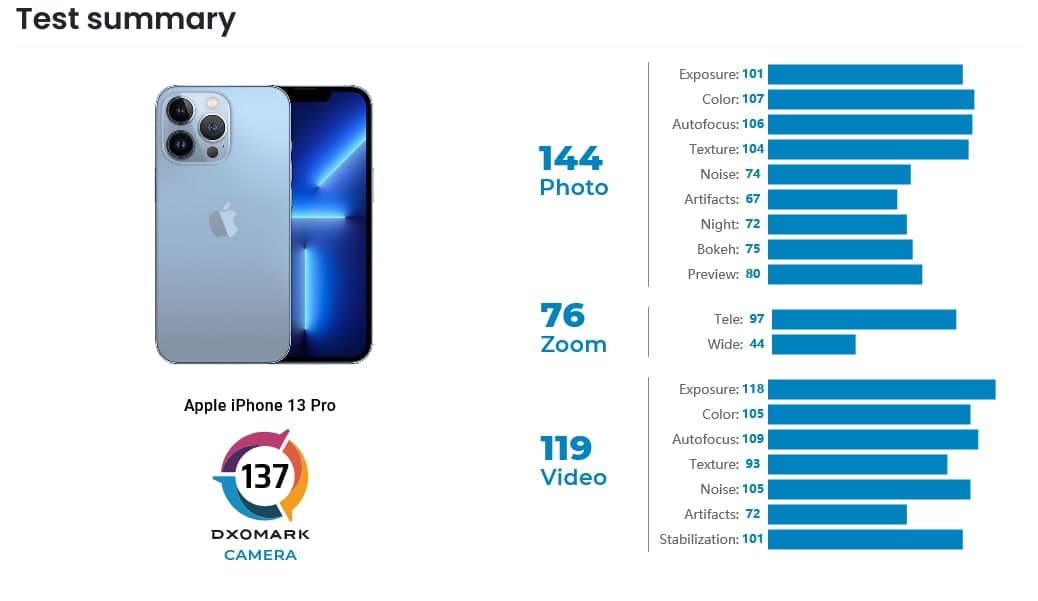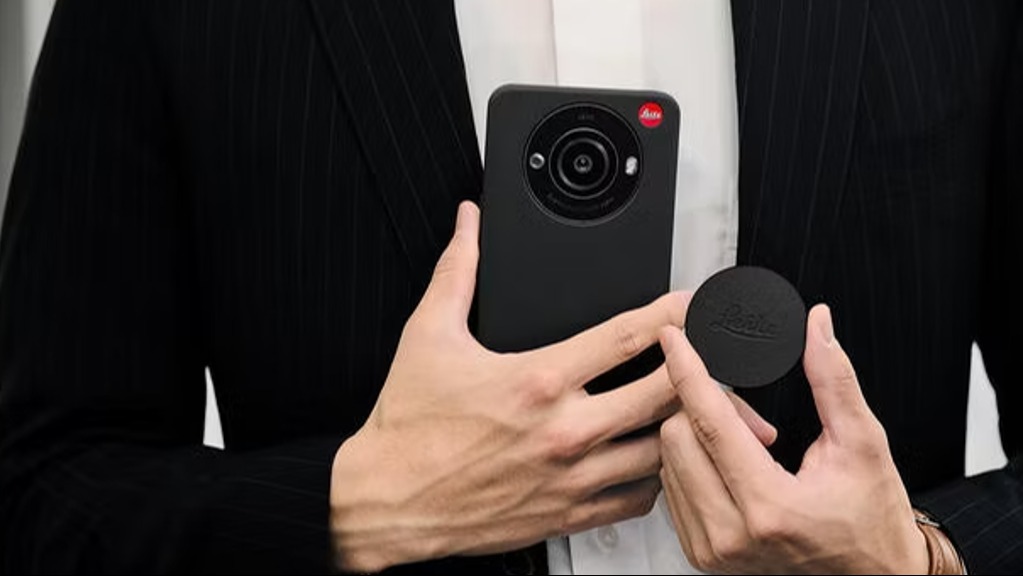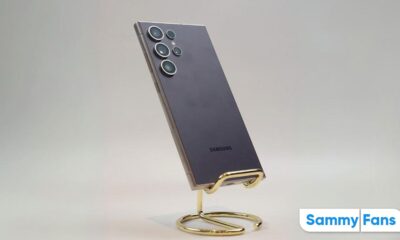Phones
Apple iPhone 13 Pro scored 137 points in DxOMark camera test

Recently, DxOMark announced the camera score of Apple’s recently launched iPhone 13 Pro, with a total score of 137 points, which is 9 points higher than the previous generation iPhone 12 Pro. Precisely, the score is 144 points for taking pictures, 76 points for zooming, and 119 points for video.
According to DxOMark’s smartphone camera table, Apple’s iPhone 13 Pro ranked fourth, losing to Huawei P50 Pro (144 points), Xiaomi 11 Ultra (143 points), Huawei Mate 40 Pro+ (139 points), by surpassing Huawei Mate 40 Pro (136 points).
DxOMark said, Apple’s iPhone 13 Pro has a total score of 137 points, which is among the best in its camera rankings. The total score plus 144 excellent photo scores. Just like other iPhones, the color rendering is vivid, the skin tones are beautiful, the touch is slightly warmer, and the camera is usually very reliable.

The overall photo performance is very similar to the 12 Pro we tested last year, but it has been improved in several ways. The color and contrast of backlit portraits have been improved, and the images show higher levels of detail, especially when shooting under typical indoor conditions.
Join Sammy Fans on Telegram
It looks like Apple’s camera engineers have managed to use the larger pixel pitch of the new sensor to improve detail retention, but just like on the 12 Pro, brightness noise can still be seen in most shooting situations.
The camera’s zoom score is 76. Although it is not the best, the performance is still better than that of the 12 Pro, thanks to the longer 3x optical zoom, compared to 2.5x for the old model. Due to multiple improvements in key areas, an excellent video score of 119 puts the iPhone 13 Pro at the top of this sub-ranking.
The very obvious tone mapping instability on iPhone 12 series models has been fixed, and exposure is now generally very stable. Autofocus performance has also been improved, thanks to better tracking at the right moment and very smooth refocusing.
Apple iPhone 13 Pro Camera Specs
- Primary: 12 MP sensor, 1.9µm pixels, 26 mm equivalent f/1.5-aperture lens, sensor-shift OIS, Dual Pixel AF
- Ultra-wide: 12MP sensor, 13mm equivalent f/1.8-aperture lens, PDAF, 2cm macro
- Telephoto: 12 MP sensor, 77mm equivalent f/2.8-aperture lens, OIS
- 3D sensor
- 4K at 24/25/30/60 fps, 1080p at 25/30/60 fps, HDR video recording with Dolby Vision
- Cinematic mode for recording videos with shallow depth of field (1080p at 30 fps)
About DXOMARK Camera tests: For scoring and analysis in our smartphone camera reviews, DXOMARK engineers capture and evaluate over 3000 test images and more than 2.5 hours of video both in controlled lab environments and in natural indoor and outdoor scenes, using the camera’s default settings.

Phones
Galaxy M35 5G surfaces on Samsung India site after FCC and Dekra’s OK

Samsung seems all set to introduce Galaxy M35 5G in India. The phone has surfaced on Samsung India support website and the FCC and Dekra certification database. The development indicates that the official launch is not far away, at least in India.
The unreleased Galaxy M35 5G made its first appearance on the Samsung India support website. The listing revealed nothing other than the phone’s model number – SM-M356B. As spotted by 91mobiles, the upcoming handset has also received certification from FCC and Dekra.
Listing on the FCC database revealed that the Galaxy M35 5G features NFC, LTE, and 5G. It’s also confirmed that the device supports 25W fast charging, lagging behind its elder brother – Galaxy M55 5G, which supports fast charging up to 45W.
Dekra certification disclosed that the phone packs a 5880mAh battery, which Samsung will market as 6000mAh. Other features could include Android 14 OS out-of-the-box, Exynos 1380 chipset paired with 6GB of RAM as well as a modern punch hole display.
Stay up-to-date on Samsung Galaxy, One UI & Tech Stuffs by following Sammy Fans on X/Twitter. You can also discover the latest news, polls, reviews, and new features for Samsung & Google Apps, Galaxy Phones, and the One UI/Android operating system.
Do you like this post? Kindly, let us know on X/Twitter: we love hearing your feedback! If you prefer using other social platforms besides X, follow/join us on Google News, Facebook, and Telegram.
Phones
Samsung’s new 5G modem fuels satellite connectivity in Google Pixel 9 series
Google‘s Pixel 9 series is ready to introduce a significant upgrade with emergency satellite connectivity and new Samsung modem. This series aims to solve the persistent connectivity problems seen in previous Pixel models.
According to the information via AndroidAuthority, Samsung Modem 5400 will be integrated with Tensor G4 chips for the Pixel 9 series to bring significant improvements in terms of speed, power efficiency, and stability
The Pixel 9’s modem will support 5G non-terrestrial networks (NTN), which means it will enable satellite-based communication. This is particularly important for emergencies where standard network coverage is unavailable.
Moreover, this innovative feature is not exclusive to the Pixel 9. The next-generation Pixel Fold and a 5G tablet, currently under development, will also be equipped with the same modem.
One of the most notable features of this upgrade is the ability to connect with emergency services via satellite, which is crucial for users in areas without cellular coverage. To facilitate this, Google has implemented a system that guides users through a set of questions, allowing for quick communication with emergency responders. For example,
- What happened?
- [Are you/Are they/Is everyone] breathing?
- In total, how many people are [missing/trapped]?
- What best describes your situation?
- What is on fire?
- Are there weapons involved?
Although the release details for the 5G tablet are still unclear, the Pixel 9 series is expected to lead the way in mobile communication technology, ensuring users can remain connected in any location.
Google Pixel 9 renders reveal design overhaul, telephoto camera
Stay up-to-date on Samsung Galaxy, One UI & Tech Stuffs by following Sammy Fans on X/Twitter. You can also discover the latest news, polls, reviews, and new features for Samsung & Google Apps, Galaxy Phones, and the One UI/Android operating system.
Do you like this post? Kindly, let us know on X/Twitter: we love hearing your feedback! If you prefer using other social platforms besides X, follow/join us on Google News, Facebook, and Telegram.
Phones
Samsung’s Variable Aperture Camera makes surprise return with Leica Leitz Phone 3

Samsung’s Galaxy S9 and S10 were equipped with variable aperture Camera tech, which could be revived with the next Leica phone. World-know camera manufacturer Leica also has a dedicated smartphone segment, which focuses on stunning camera specifications.
Latest inputs indicate that the upcoming Leitz Phone 3 by Leica will feature a variable aperture camera tech – the same as Samsung’s legendary Galaxy S9 and Galaxy S10. The company is reportedly working on the Leitz Phone 3 which will be launched in Japan only.
Camera Specs
Leica Leitz Phone 3 is said to have a 47.2MP primary 1-inch sensor with an aperture of f/1.9, a depth sensor with 1.9MP, plus a 12.6MP sensor for the front camera. The specs are the same as Phone 2, but the variable aperture feature sets the Leitz Phone 3 apart.
The company itself confirmed that the Leitz Phone 3 is equipped with variable aperture camera tech. This high-profile camera feature will allow users to adjust the opening to the sensor to improve photography in different lighting conditions.
Leica is also said to have optimized software with Noctilux-M 1:1.2/50 mm, Summilux-M 1:1.4/28 mm, and Summilux-M 1:1.4/35 mm sensors. As a result, the smartphone will allow users to choose between f/1.2, f/1.4, and f/8 aperture levels to better shoot in sunlight and low-light conditions.

Image: AndroidPolice
Stay up-to-date on Samsung Galaxy, One UI & Tech Stuffs by following Sammy Fans on X/Twitter. You can also discover the latest news, polls, reviews, and new features for Samsung & Google Apps, Galaxy Phones, and the One UI/Android operating system.
Do you like this post? Kindly, let us know on X/Twitter: we love hearing your feedback! If you prefer using other social platforms besides X, follow/join us on Google News, Facebook, and Telegram.










